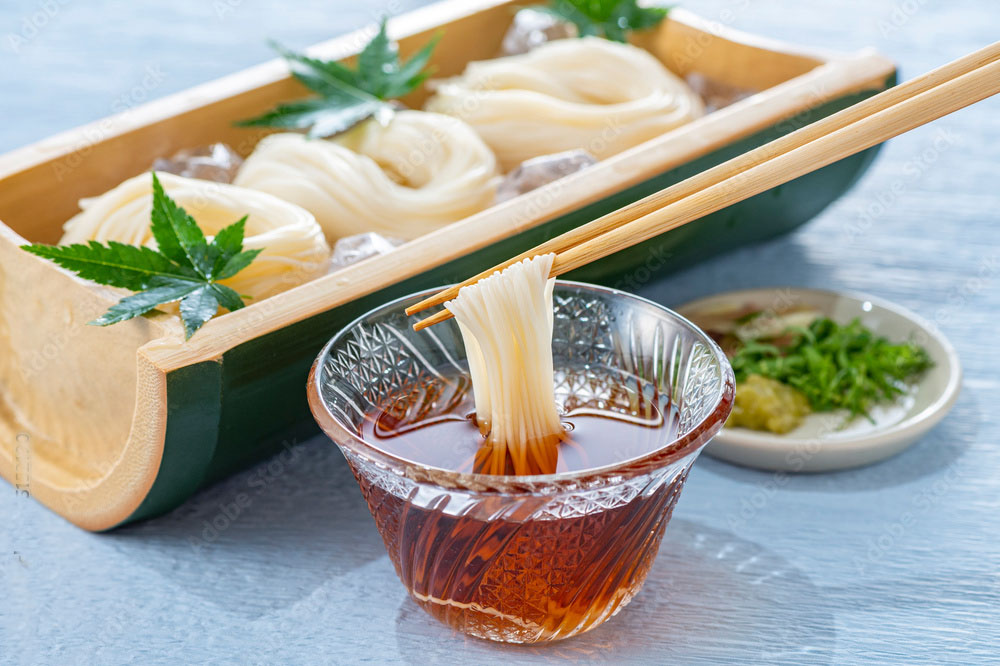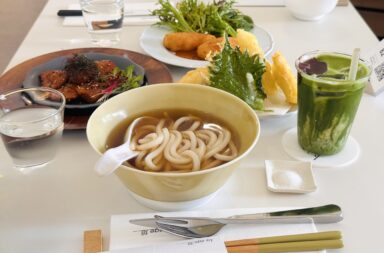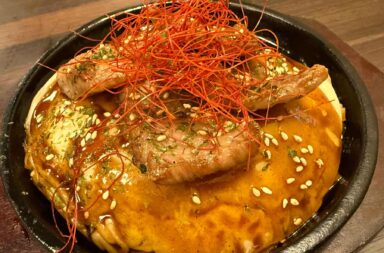This post is also available in: Indonesia
Discovering the Refreshing Flavors and Tradition of Soumen
In Japan, as the warm summer breeze sweeps through the country, one dish reigns supreme in providing a refreshing respite from the heat – Soumen.
These thin, delicate wheat noodles have been cherished for generations, offering a unique culinary experience that sets them apart from other Japanese noodles.
In this article, we delve into the origins of soumen, explore why it is a popular summer delicacy, highlight its differences from other noodles, and guide you on how to savor this delightful dish.

The Origins of Soumen
Soumen’s origins can be traced back to the Nara period (710-794 AD) when the art of noodle-making was introduced from China. Over time, Japanese artisans perfected the art, resulting in the exquisite, thin strands we enjoy today.
The noodles are made from high-quality wheat flour, kneaded and stretched to produce their ultra-fine, silky texture, making them a truly exquisite culinary jewel.
Why Soumen is Best Enjoyed in Hot Weather
Soumen’s popularity during the summer season can be attributed to its chilled serving style. Typically served on bamboo trays with ice-cold water, the noodles remain cool and refreshing even on the hottest days.
This unique presentation not only satisfies hunger but also provides a refreshing escape from the sweltering temperatures.
Soumen vs. Other Japanese Noodles
While Japan boasts a diverse array of noodle dishes, soumen stand out due to its extremely thin and delicate texture. Unlike the chewy udon or the hearty ramen, soumen offers a light and almost ethereal mouthfeel. Additionally, its swift cooking time makes it an ideal choice for quick meals, allowing everyone to enjoy the full flavors of summer without spending excessive time in the kitchen.
The minimalist elegance of soumen is an embodiment of the Japanese appreciation for simplicity and purity.

Soumen: The Art of Eating
Eating soumen is an art form in itself. You will only need to boil the noodles for one to two minutes, quickly wash it to cold water, and it’s ready! Once the noodles arrive on the table, diners dip them in a flavorful tsuyu sauce (a sauce made from soy sauce, mirin, and dashi broth). Alternatively, some prefer to drizzle a small amount of the sauce over the noodles.
Toppings like sliced green onions, grated ginger, and wasabi add extra zest and aroma.
Where to Purchase Soumen and Tsuyu Sauce?
Soumen can be easily purchased at the supermarket in Japan, especially during summer when the store displays seasonal items at the front, so you’ll easily find soumen there.
Meanwhile, since the tsuyu sauce is made by blending shoyu in it, it might have an alcohol content. Otafuku company, Japan’s well-known sauce-manufacturing company, was collaborating with Tokyo’s vegan restaurant “Saido” and launched vegetable-based (vegan-friendly) tsuyu sauce which you can get easily from Amazon Japan.

Otafuku’s vegetable-based tsuyu sauce (Amazon Japan).
Another option is a halal-certified noodle soup from Maruju company you also can get from Amazon Japan.
See Also

Maruju company’s halal-certified noodle soup (Amazon Japan).
Are You Ready to Enjoy Soumen This Summer?
Soumen, Japan’s delightful summer noodles, intertwines history, tradition, and the essence of summer in every mouthful.
Its delicate texture and the art of eating it offer a unique culinary experience.


